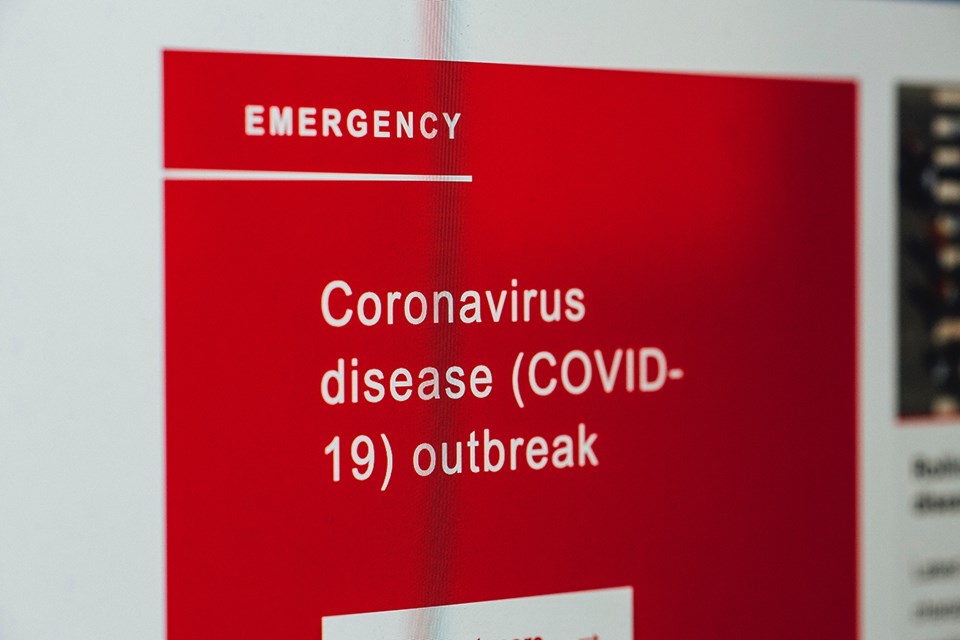COVID infection numbers in Ontario are looking encouraging, but not in Sudbury. COVID infections numbers are rising.
We have been declared a hot spot in the province. The number of hospitalized patients is increasing. There was a new death recently associated with the virus. At the same time, our district has begun lifting capacity limits and reducing public health measures. What is going on?
In response to continued improvements to key indicators, Ontario intends to lift all remaining public health measures over the next six months. The province began to lift capacity limits on Oct. 25, including physical distancing requirements, in the vast majority of settings where proof of vaccination is required, such as restaurants, bars, gyms, casinos, bingo halls and indoor meeting and event spaces.
To manage COVID-19 over the long-term, local and regional responses by public health units will be deployed based on local conditions. Public health measures that may be applied locally could include reintroducing capacity limits and/or physical distancing, reducing gathering limits and adding settings where proof of vaccination is required.
Local medical officers of health have the ability to issue instructions under the Reopening Ontario Act.
Dr Penny Sutcliffe, the region’s medical officer of health, issued a statement on Oct. 28 addressing the rising case count.
“While the province of Ontario is seeing improvements in COVID-19 case counts, trends in Greater Sudbury are going in the opposite direction,” Sutcliffe stated. “We are currently a COVID-19 hotspot, with a case rate that is among the highest in the province.”
Sutcliffe said the number of new local cases over the past several weeks with no known epidemiological source is ”a worrying trend of community spread of the virus.”
“The seven-day rate of new cases was 82.5 per 100 000 population, compared with 17 for the province of Ontario,” she stated. “Increases in active cases lead to subsequent increases in hospitalizations, and Health Sciences North already has the highest occupancy percentage among all Ontario hospitals that have more than 100 acute beds.”
There were up to 11 distinct outbreaks in the community last week and, on Oct. 30, an outbreak of COVID-19 was declared on the fourth floor of the North Tower of Health Science North.
You may ask “How is this possible? Why is Sudbury suddenly a hotspot?”
Ryan Imgrund, a biostatistician based in Sudbury, believes that infections in students are a powerful mode of spread in the community: from student to student in the classroom, and then from student to family at home, and from family to the wider community.
Young people connect one household to the next — 100 per cent of school children under 12 and 25 per cent of students 12 and over remain unvaccinated.
That is a large pool of individuals studying, socializing and playing sports in close proximity. Whereas there were few confirmed cases connected with our two school outbreaks, there were surely many undetected cases. Young people tend to have no or few symptoms.
About one-sixth of the province's education workforce have not been fully vaccinated.
The Ontario government does not and will not require students to be vaccinated against COVID-19 to attend school. It will require unvaccinated school staff to undergo rapid antigen testing three times per week, but is not prepared to impose a mandatory vaccination rule for these staff.
It has denied rapid testing to schools without an outbreak, instead leaving it up to the discretion of the local medical officer of health.
To summarize, the province will continue to pay for the cost of rapid test screening for school employees, but is refusing to do so for students who are not fully vaccinated.
On Oct. 15, Premier Doug Ford wrote to hospitals and other stakeholder groups asking for input on a provincewide vaccination mandate. The Ontario Hospital Association, the province’s COVID-19 advisory Science Table and the vast majority of hospitals have all endorsed mandatory vaccination for health-care workers.
On Nov. 1, Health Sciences North announced that as of Dec. 21, all employees must be fully vaccinated or face termination. As of this writing, 93 per cent of employees and 99 per cent of physicians are already fully vaccinated.
On Nov. 2, Ford announced he is refusing to mandate vaccination for health-care workers (except in long-term care homes). He left it up to the discretion of individual hospitals.
To summarize, it is clear the premier is not and will not issue provincewide orders that appear controversial. He has refused to make the hard decisions. He has left such decisions to local medical officers of health, to local hospitals, to individual businesses and corporations. Let them face the anger of unhappy individuals.
Health Science North has made its difficult decision.
Dr. Sutcliffe, what are your intentions? It is up to you to use your delegated powers. Our community needs your help.
Reverse the lifting of capacity limits announced by the province, until such time as our infection rates and hospitalizations come under control. Provide rapid testing at all of our schools to screen for asymptomatic infections, again until such time as our infection rates come under control.
Dr. Peter Zalan is the former president of the medical staff at Health Sciences North, and a retired intensive care physician.
